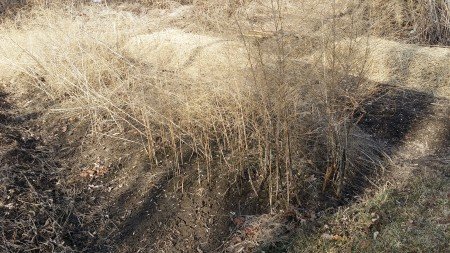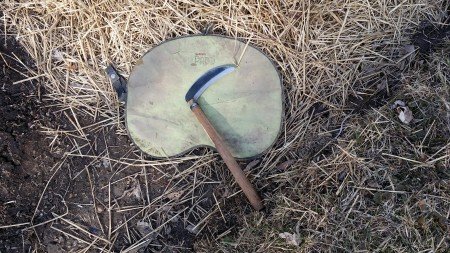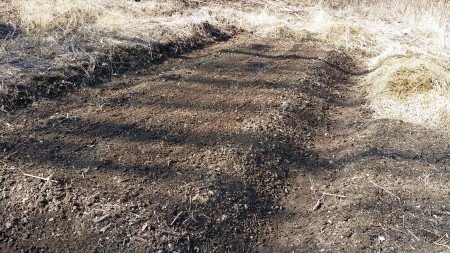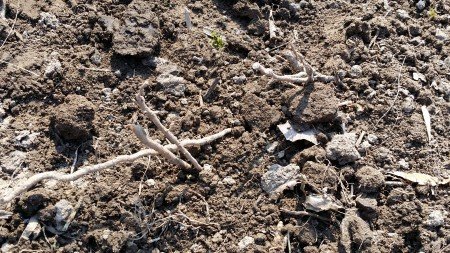This is my asparagus, which I planted in 1989. The picture was taken just before I cut down the stalks from last season’s growth. A lot of gardeners cut their stalks back in the fall, but I’ve read several sources which say it makes more sense to let the stalks keep growing and feeding the roots as long as possible. I normally cut the stalks back in March, but this March was too cold to want to do anything in the garden, so it didn’t happen until the first warm day of April.
In the past I’ve used pruning loppers to cut the roots back, but a few years ago I switched to chopping them off with my kama. It makes the job lots faster and easier. The cuts are more ragged than they would be with the loppers, but I haven’t noticed any problems with yields or plant health.
After cutting down all the stalks, I cleaned out any weeds and added ten gallons of compost. Here’s the bed all smoothed out and awaiting this year’s harvest, which should start showing up very soon.
If I were to do this again, I would make the bed one foot narrower. The bed is four feet wide across the top and just a little too wide for easy access. Three feet across the top of raised beds proves over and over to me to be the ideal width.
Other than weeding and cutting back the previous years growth, asparagus is a pretty maintenance free crop, especially when you factor in its longevity. It is important to keep it well weeded or grass will choke out and kill the plants.
The roots have wandered a little in the 25 years they have been in the bed. Here are a few that have found their way to the edge of the bed and into the aisle.
Asparagus fresh from the garden is delicious and it looks like we’ll be enjoying this bed for several more years to come.





Hi Noel! How big is the bed and how much do you typically harvest? I have a couple of raised beds that are approx. 3′ x 12′ total and am trying to figure out if this size will produce enough fresh asparagus for my husband and me in the spring. Thanks!! Hope you’re well!!
Hi Mary Beth, my bed is about 4′ x 20′ and way too big. We end up giving a lot away and trying to be creative to use it all up. But when I planted it, I was feeding four, not two. 3′ x 12′ should be plenty for two.
Thanks Noel!
We just purchased a property that has a large patch that is atleast 25 years old. I believe some new young shoots are coming because they are very thin. Besides adding compose per your suggestion above, I have two questions:
1. Should I add some form of fertilizer such as manure or other commerical type?
2. Should we water it if we are short on rainfall? (we pump from a lake, not city water).
I think the most important single thing to get healthy asparagus is to try to weed out as much grass you can. I let a lot of small weeds go, but I try to keep after grasses and other runner weeds which can choke out the asparagus. I don’t think established asparagus needs much fertilizer, but manure would not hurt as long as it is aged and applied late fall or very early spring. I’ve never watered my asparagus after it was established, the plants have an extensive root system. I think you should be able to tell if they need water, however.
Hi, Noel,
My asparagus crowns are about 3 years old . I let the shoots grow up and become fern like and become very tall. I notice that there are red berries that appear before the fern growth becomes very mature and then the whole plant fades away . I am curious about the berries – are they edible and what should I do with them .
Thanks !
Elizabeth
I’ve never eaten the berries, but online sources cite them as slightly toxic.
Hi, Noel–Enjoyed your article. We have found, too, that keeping things weed free is very important in keeping the bed producing over many years.
Our bed was started in 1980 and is still going strong. It is a raised bed, 4″ by 20″. In the spring, after cleaning out the bed we also put put compost on it. We often mulch the bed with grass clippings. We have added sand to the ground when it seemed to be getting to compact. The asparagus is a real treat that our family and friends look forward to each spring.